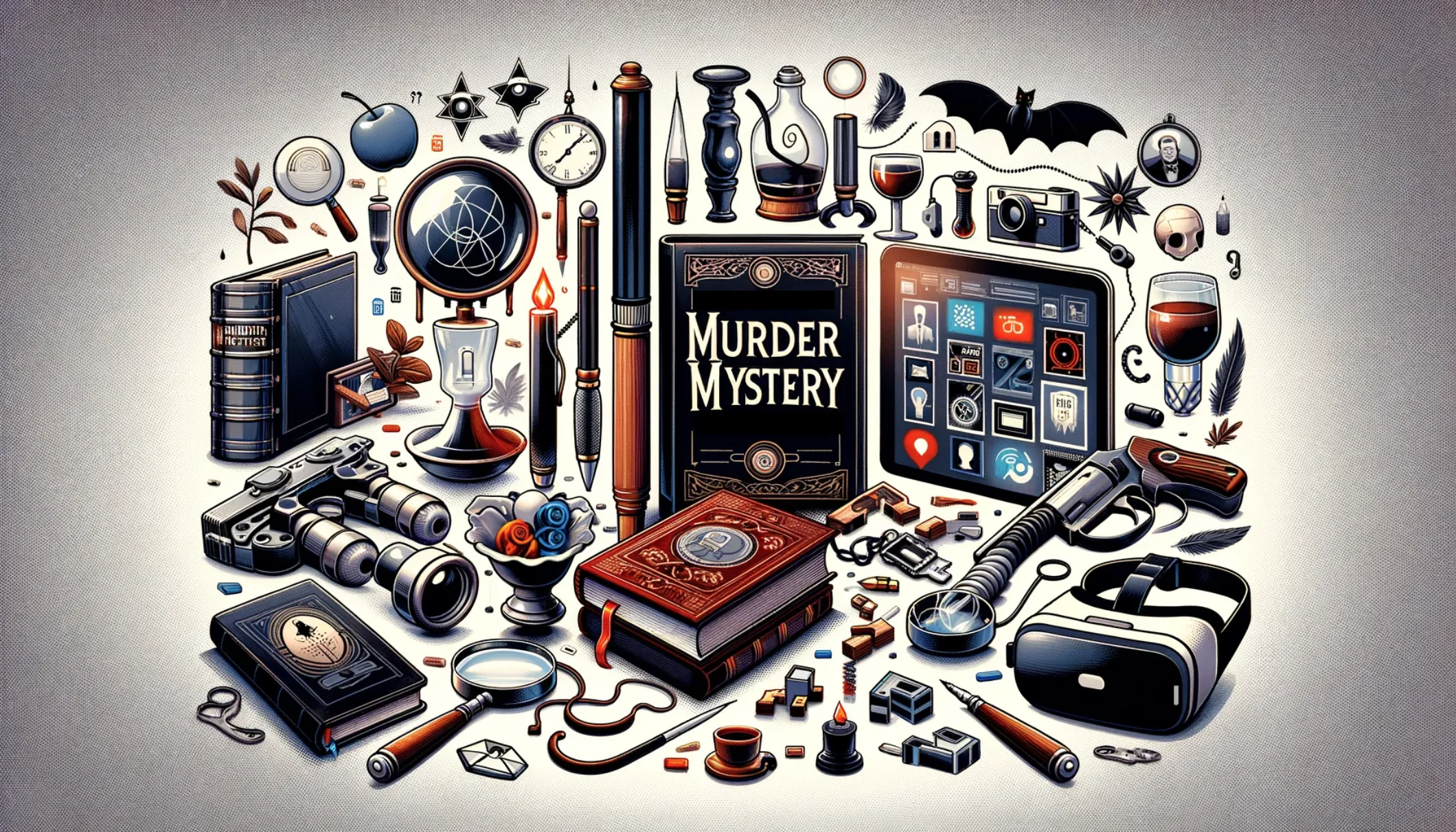How Murder Mysteries Evolved from Classic Tales to Virtual Reality Thrillers
- By Helen Naumann
- 16 Dec, 2023

The History of Murder Mystery Entertainment…
From the whispered secrets of dimly lit drawing rooms to the digital screens of today’s interactive adventures, the allure of the murder mystery has captivated audiences for centuries. This journey through the evolution of murder mystery entertainment reveals how this beloved genre has transformed from printed page to immersive experience, continually adapting to intrigue new generations of sleuths.
Origins in Literature
The roots of murder mystery entertainment are deeply entwined with literature. Early works by authors like Edgar Allan Poe and Sir Arthur Conan Doyle laid the groundwork with tales of deduction and intrigue. Poe’s “The Murders in the Rue Morgue” (1841) is often credited as the first detective story, introducing the world to the concept of solving crimes through logical reasoning. Sherlock Holmes’ adventures, penned by Doyle, brought the detective archetype to the forefront of popular culture, setting a template for countless mysteries to come.
Board Games and Parlor Games
The early 20th century saw the adaptation of murder mysteries into social gatherings, with parlor games where guests would assume roles in a story to uncover a “murderer” among them. The 1930s brought the invention of the board game Cluedo (Clue in North America), which encapsulated the murder mystery’s intrigue in a competitive format, allowing players to solve a crime through process of elimination and strategy.
The Rise of Dinner Theater and Live Experiences
The 1970s and 80s witnessed the emergence of murder mystery dinner theaters, where audiences would enjoy a meal while participating in a live, interactive murder mystery. This format added a communal and participatory dimension to the genre, blending entertainment with social dining.
Modern Digital and Immersive Experiences
The digital age has ushered in a new era for murder mystery entertainment, with video games, virtual reality (VR), and online platforms offering highly interactive and immersive experiences. Games like “Her Story” and experiences provided by platforms like Hunt A Killer allow players to delve into intricate stories, analyzing evidence and making decisions that impact the narrative outcome.
The Role of Technology and Social Media
Advancements in technology and the rise of social media have expanded the possibilities for murder mystery entertainment, enabling creators to craft more complex and engaging narratives. Augmented reality (AR) and VR have introduced new dimensions to solving mysteries, making the experience more lifelike and immersive. Social media platforms have also facilitated interactive, community-driven mystery games, where participants collaborate to solve crimes, blurring the lines between fiction and reality.
The enduring appeal of the murder mystery lies in its ability to evolve, reflecting changes in technology, media, and audience expectations. From the printed tales of Edgar Allan Poe to the interactive digital adventures of today, the genre has thrived by challenging participants to think critically, deduce logically, and immerse themselves fully in the world of crime-solving. As we look to the future, it’s clear that the murder mystery will continue to adapt, offering new and exciting ways for us to engage with our inner detective.
